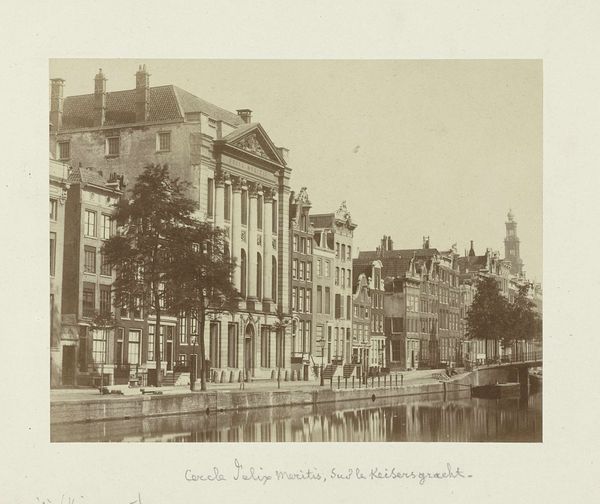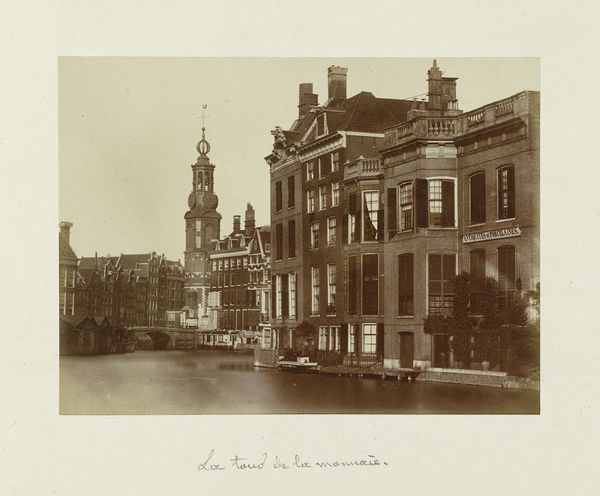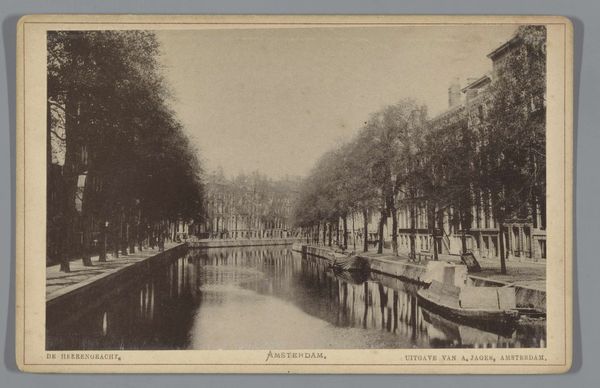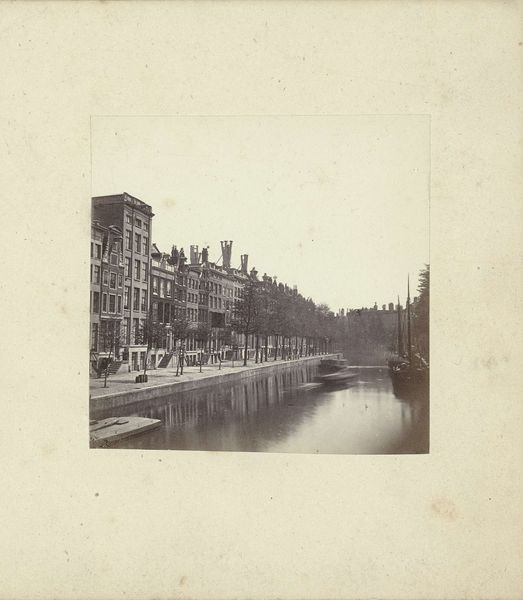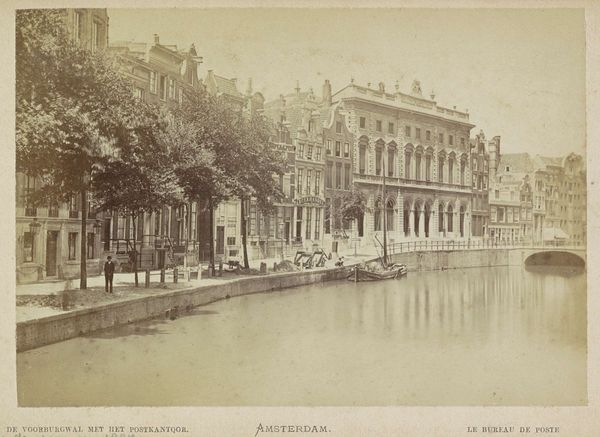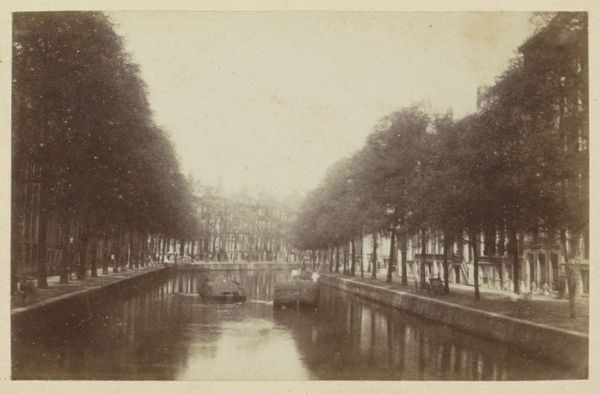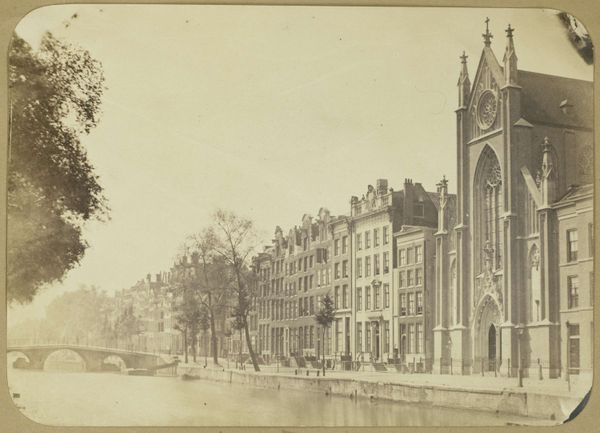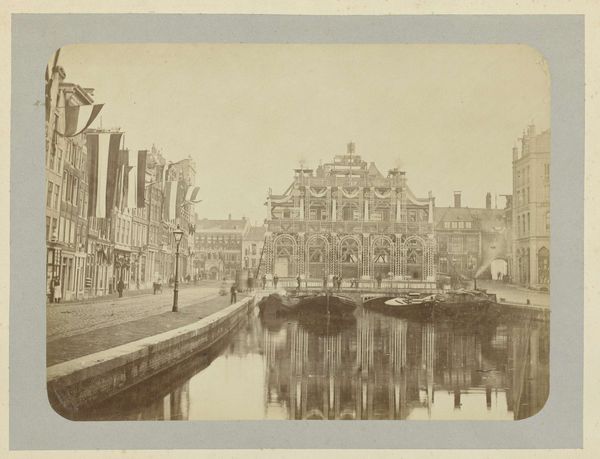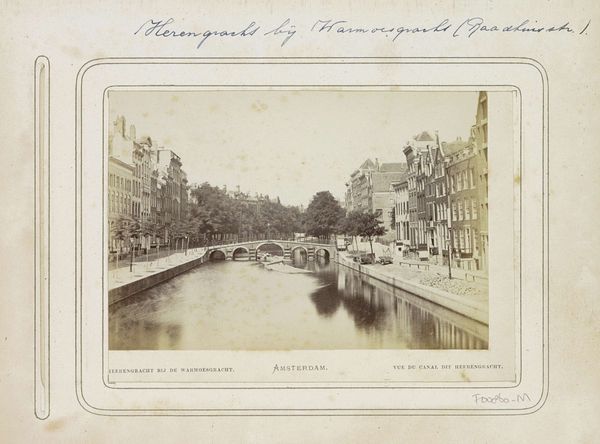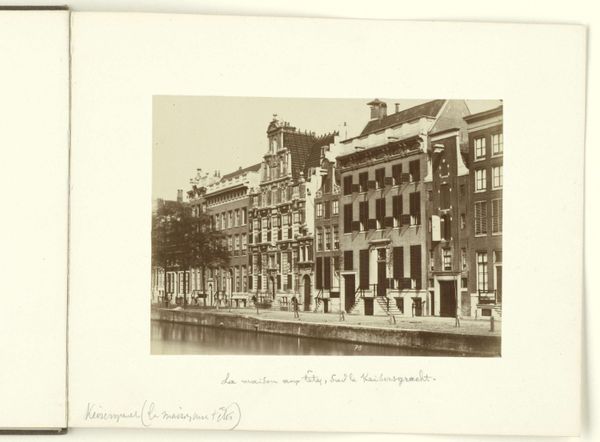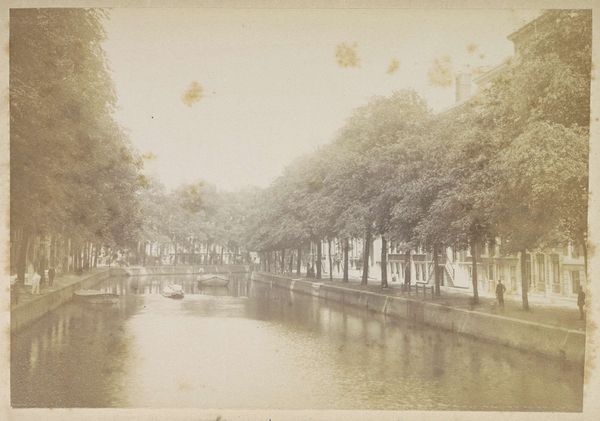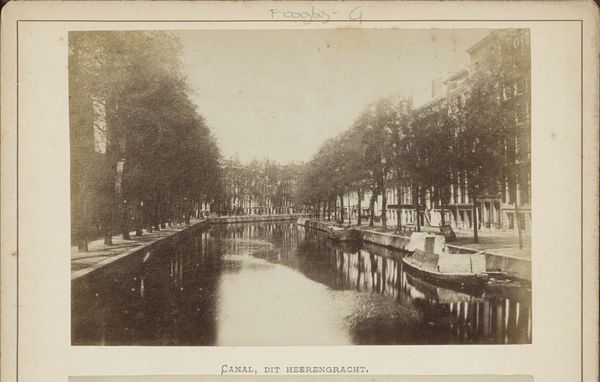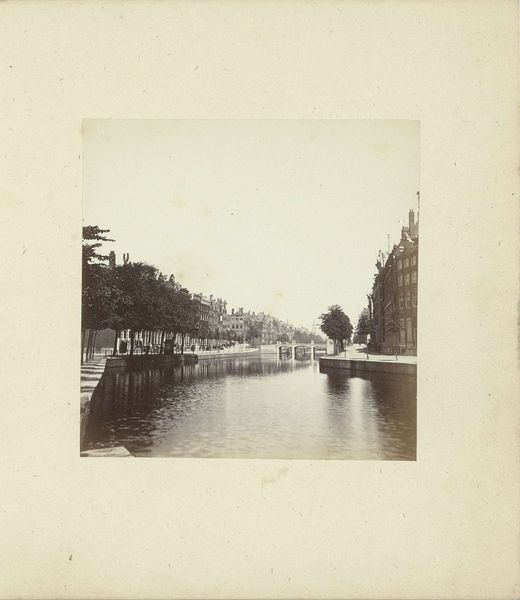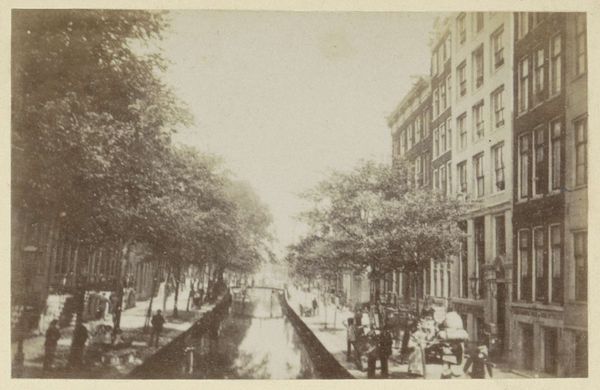
Gezicht op de Gouden Bocht in de Herengracht ter hoogte van de Nieuwe Spiegelstraat, waarschijnlijk gezien vanaf de Vijzelgracht before 1860
0:00
0:00
photography
#
dutch-golden-age
#
landscape
#
photography
#
cityscape
Dimensions: height 128 mm, width 176 mm
Copyright: Rijks Museum: Open Domain
Curator: Pieter Oosterhuis captured this view, "Gezicht op de Gouden Bocht in de Herengracht ter hoogte van de Nieuwe Spiegelstraat, waarschijnlijk gezien vanaf de Vijzelgracht," sometime before 1860. It's a photograph held here at the Rijksmuseum. Editor: It's quite still, almost ghostly, isn't it? The light feels very muted, imbuing the scene with a strong sense of historical distance. Curator: Indeed. The choice to frame this Golden Age cityscape as seen from the water evokes continuity, a powerful connection to the past, where the canal reflects the cultural significance embedded within these stately buildings. Notice how the canal is a mirror but also how it's also a path. Editor: The medium itself, photography, emphasizes a mechanical reproduction—but what's reproduced is actually about wealth. Consider all of that architecture lining the canal—each brick, each carefully placed window—evidence of Dutch prosperity painstakingly laid down. Curator: The architecture speaks volumes. Its orderly appearance mirrors a deeper social structure, each façade communicating status. Even the reflections, however ephemeral, signify how deeply these ideals are entrenched. Editor: I'm struck by the relative absence of people, only the trees hinting at vitality. Was that due to technical limitations? Extended exposure times would blur any movement. It creates a tension between the image of wealth and the human labor to create it. Curator: Precisely, and it's a tension of memory versus record. The light, diffused as it is, grants a quality of timelessness. You get the impression that the moment he chose to document wasn’t of daily life, but a quest to encapsulate something of enduring importance. Editor: It really pushes me to contemplate the economics embedded in these very buildings. Beyond the artistic value, we’re seeing an index of social capital being recorded and preserved, even in the very grain of this photographic print. Curator: An eloquent reminder of photography's ability to arrest the flow of time. I'm still pondering how Oosterhuis chose that particular vantage point in capturing this vision of Amsterdam, offering up layers of symbolism to the contemporary eye. Editor: And for me, the photographic print stands as testament of human industry; those stately buildings, that perfectly still canal reflecting generations of economic drive, ambition and access.
Comments
No comments
Be the first to comment and join the conversation on the ultimate creative platform.
